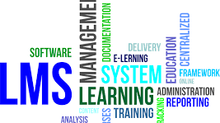Reshaping the way we learn through gamification
- Dylan Hedges
- Jul 10, 2017
- 3 min read
Gamification is definitely one of the most talked about topics when it comes to what's trending in the Learning and Development industry, which appears to be expanding in its use and acceptance. As a gamer myself, and someone who's passionately creative, it's amazing to see how quick and easy it is to learn my way around the garage and streets in my favourite Need for Speed games. How easy it is for me to learn the objective of each course, and how easy it is for me to find my way to the closest shop after escaping the cops on a crazy, high-speed chase. Back then, I remember crunching the crap out of my controller, skipping through all the boring dialogues between these wanna-be gangsters and the how-to's of controlling my car, so I can take my corvette on the streets.
Nowadays, you're forced to learn the basics before you even get to pick your car. You're forced to understand the dynamics of the relationships between you and all the other characters. But I'll admit, it was a fun experience. The first time I was forced to participate in the intro, I immediately started looking at this through the perspective of an Instructional Designer. How cool would it be to recreate such a concept to help employees with their learning at progressive organizations?
And though I wish I was the only designer who thought of such grand ideas, the reality is that all designers are constantly thinking of ways to make our learning fun, engaging and more importantly, designing a solution that makes training stick and motivates participants at the same time. And though there are some critics who believe that gamification is just another fad, I'm writing this post with the intent to prove otherwise.
So what is gamification? Let's take a step back and break this down for a sec. Gamification is the science of motivation, distributed learning and other neuroscience foundation combined with gaming elements to engage learners. Simply put, it's taking those really cool engagement techniques that you see in video games to create a really cool and memorable learning experience. This very technique is already being used in industries such as the military, NASA and even in medical facilities, allowing surgeons to sharpen their skills before practicing on a live patient (no pun intended). I've also seen this technique used in driving schools where students can learn how to properly operate a DZ truck. Gamification is just as popular in the manufacturing industry and scientific markets as well. Now let's talk endorphins... I know this might sound a bit disjointed, so I'll get to the point very quickly. When we are engaged in activities like video games, our bodies release a hormone called endorphins. This is the horomone that is associated with fun and reward. Having fun while learning = an overdoes release of endorphins = a stronger ability to retain information, which in turn equals a powerful learning experience. Endorphins also creates a sense of excitement within the participant as they feel more motivated because they're accomplishing something - even if it's being able to move on to the next stage. And let's get real (life). Gamification is the most suitable format to implement when you're trying to simulate real-world scenarios. Learners are able to venture out and learn in an environment that's as real-life as you can get. Learners are able to gain exposure of new scenarios and get a sense of how their choices will impact their environment or those around them. The added benefit to gamification, is that it allows learners to repeat specific scenarios so they can master their skills before transferring their knowledge to the workplace.
Regardless of your industry, gamification can assist with delivering an engaging, educational and entertaining learning experience. Stay connected and talk to us about your upcoming learning initiatives. Our bright and talented staff here at Pathways Training & eLearning would love to collaborate ideas on how you can implement gamification within your organization.


































Comments